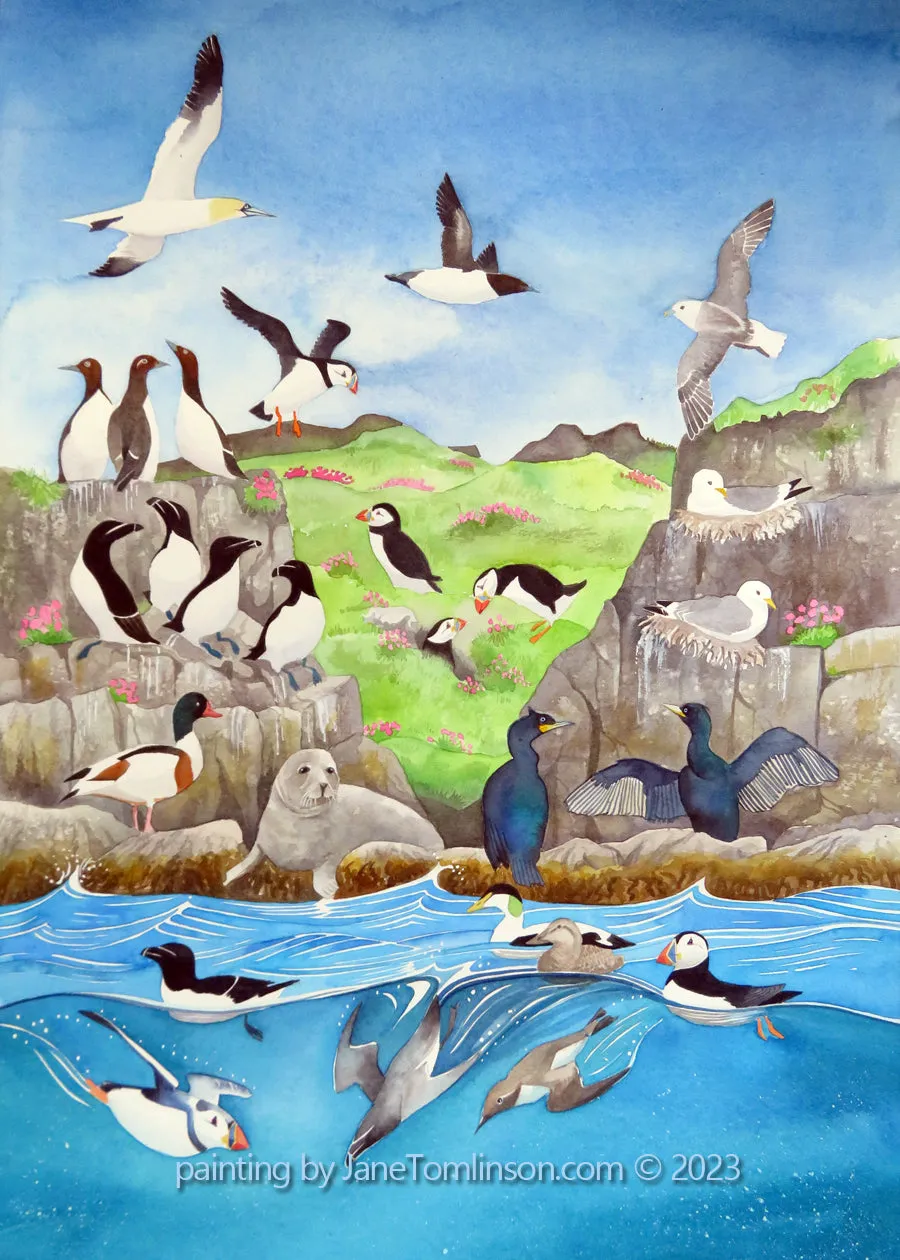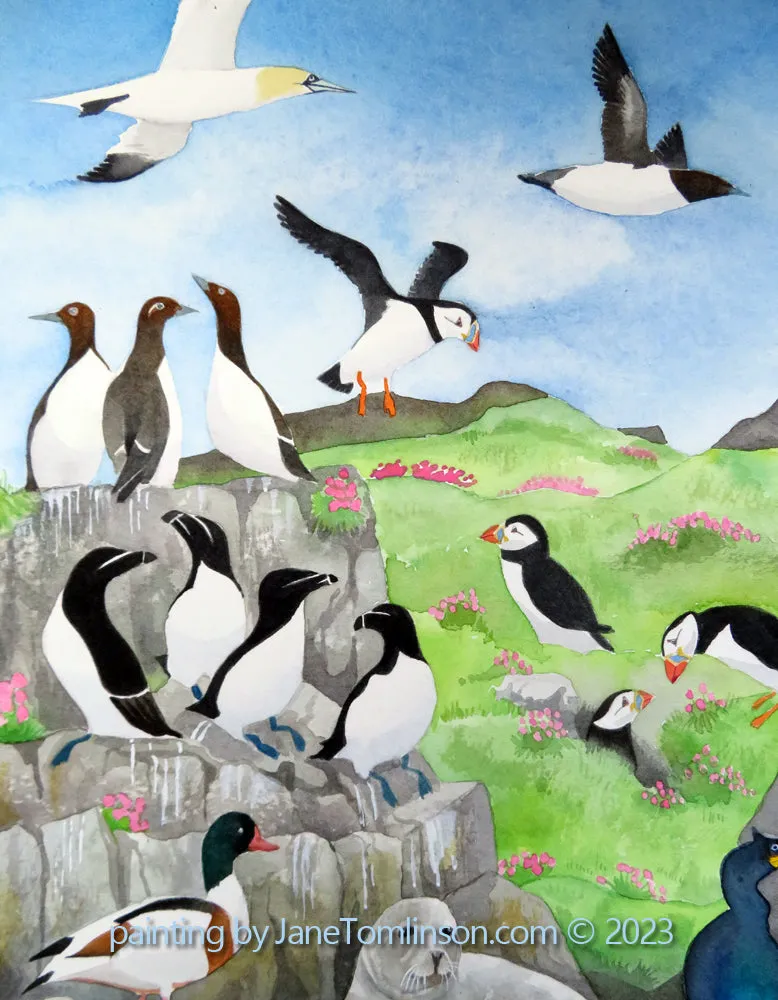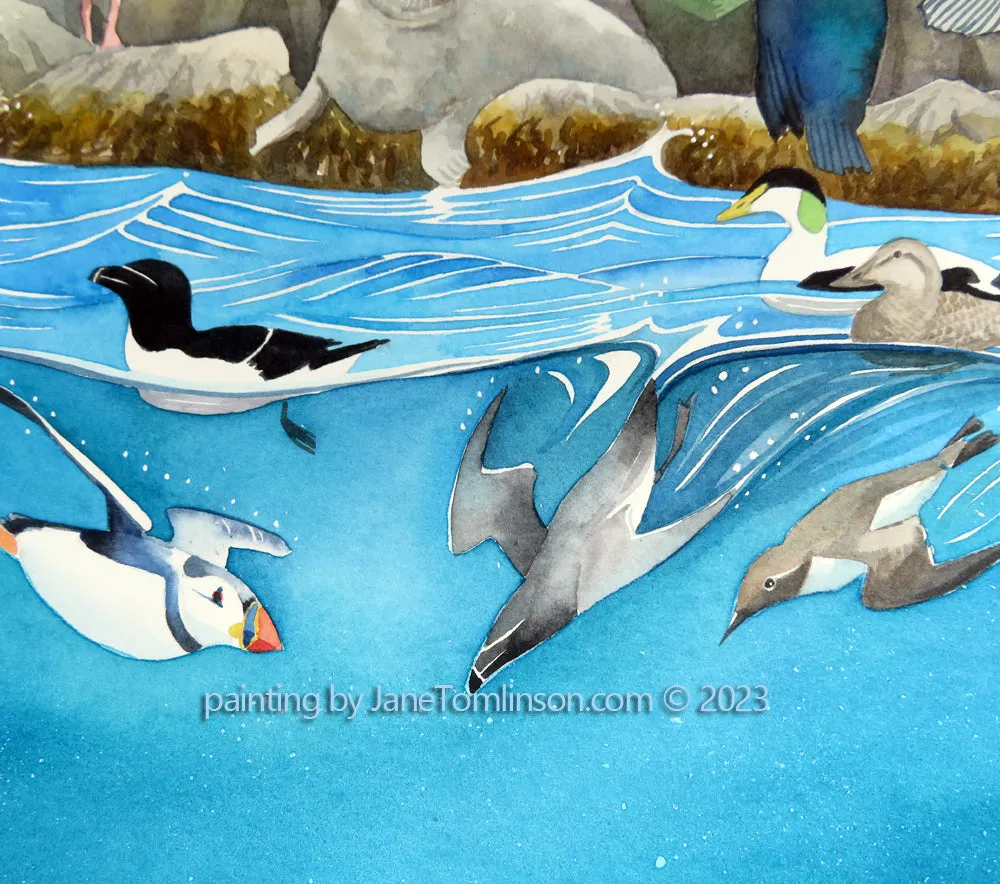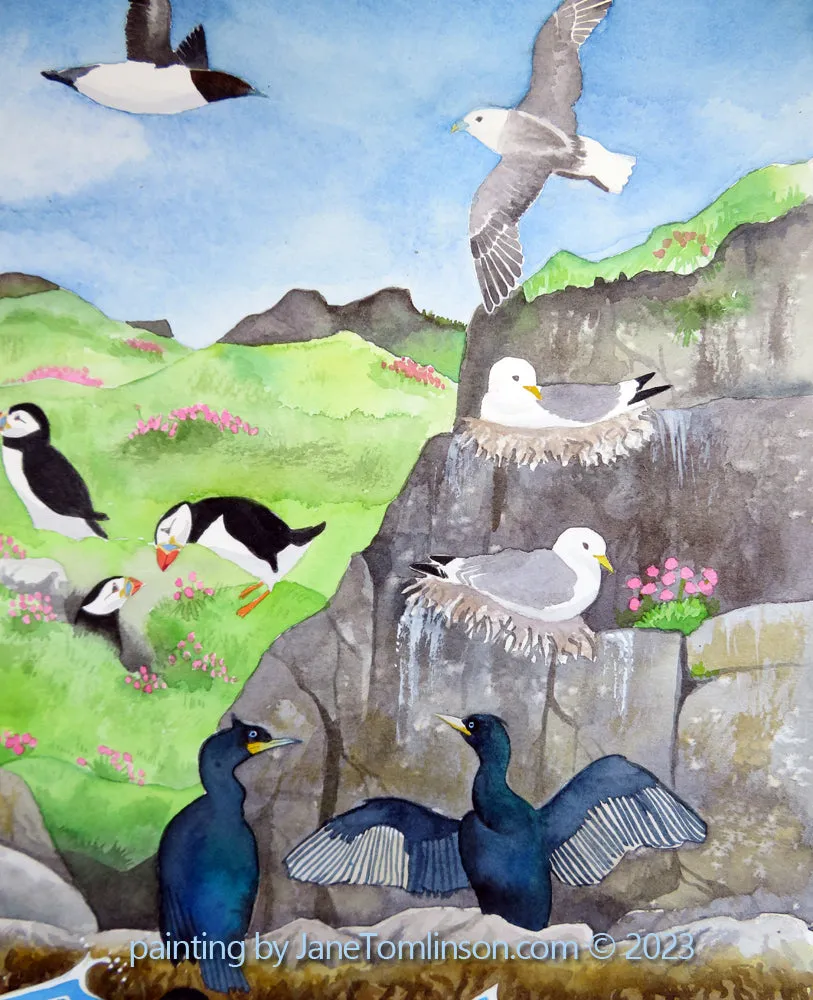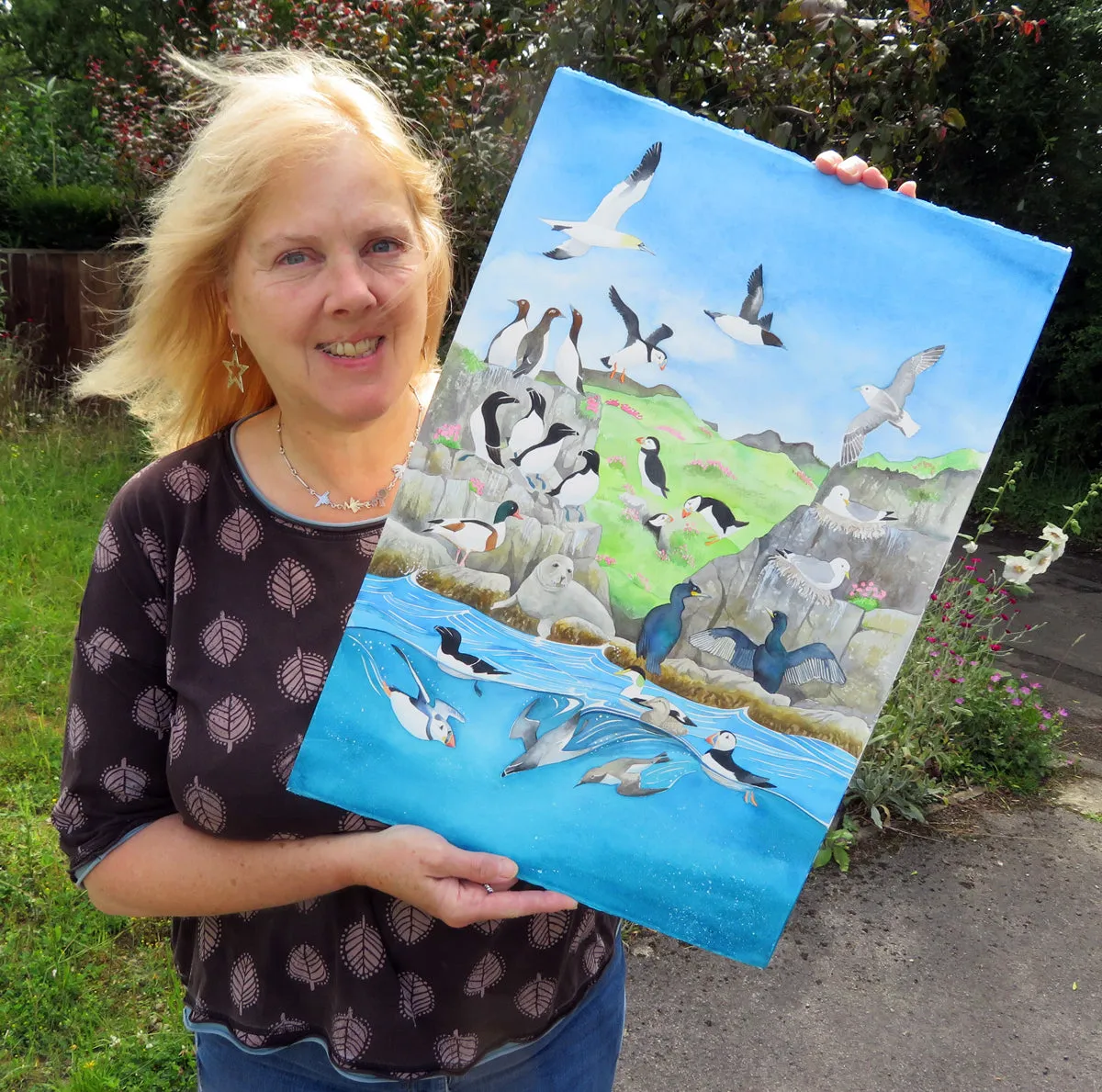A painting celebrating British seabirds
- An original painting in watercolour on 600gsm paper, size size 565 x 387mm
- A2 size signed poster prints
- Digital file for you to make a print at a format and size of your choice
- I also have of this painting.
A spectacular and wonderful thing happens between April and August every year on the coasts of the British Isles. Hundreds of thousands of seabirds assemble to find their partner, mate, nest and raise their chicks. In my painting "Seabird Spectacular!", I have illustrated nine common species:
- Northern gannet (Morus bassanus)
- Shag (Gulosus aristotelis)
- Shelduck (Tadorna tadorna)
- Common Eider Somateria mollissima)
- Guillemot (Uria aalge)
- Atlantic puffin (Fratercula arctica)
- Razorbill (Alca torda)
- Kittiwake (Rissa tridactyla)
- Northern Fulmar (Procellaria glacialis)
- and a grey seal! (Halichoerus grypus)
My painting is not of one particular view at a particular time. It's a combined memory of numerous boat trips to seabird colonies around the British Isles over the years. The inspiration to paint this now came from a boat trip around Craigleith Island and to Bass Rock, just off North Berwick in June 2023. I've tried to illustrate some of the activity that fascinates me so much: birds on their nests, sitting on eggs, taking off, landing, bobbing about on the water, diving, and wheeling and whirring overhead. What I can't illustrate is the soundtrack - the raucous calling, the cries of the kittiwakes, the moans of the guillmots, the whirring of the wings. I can't illustrate the smell either. Thousands of birds produce a lot of guano!
If, like me, you love seabirds, I hope you like my painting
Seabirds live most of the year at sea, seeking out their food of small fish, including sand eels, but in the summer, they have no choice but to return to land to breed. Typically, they nest together in huge colonies of thousands of birds. Many species choose off-shore islands steep ledges, cliffs and rocky outcrops - places where they won't be disturbed by predators such as rats and foxes. Grey seals can often be seen lounging on the rocks at the foot of seabird colonies. They know it's safe, too, and the seals don't bother the birds.
But seabirds are in trouble. For most species, a pair can only raise one chick a year. A combination of warming seas, a lack of food, avian flu, and pollution are badly affecting their numbers. Read more in . So get out there and enjoy them while you can!
Take a trip see the seabird spectacular for yourself!
There are hundreds of options for short tourist boat trips from ports all around the UK. Really top class operators will give you a running commentary as you go, pointing out different species and explaining their behaviour. For many, advanced booking is essential.
• Head to west Wales and take a trip with They go to Skomer, Skokholm and Grassholm.
• Head to East Lothian, and visit Bass Rock and Craigleith Island. We like 's trips which go from North Berwick harbour.
• Take trip to the Isle of May from East Lothian, or Fife.
• Visit Dunbar Harbour and see the kittiwakes nesting on the ruins of the old castle. You can get very close and not disturb them.
• The Farne Islands, Northumbria, are a favourite place for many visitors.
• From Cornwall and the Scillies, there are too many boat trips to mention!
Want to find out more about British seabirds? I recommend a visit to the , in North Berwick, East Lothian, Scotland. And if you can't get there, they have webcams so you can watch them live from your desktop during the summer months.




